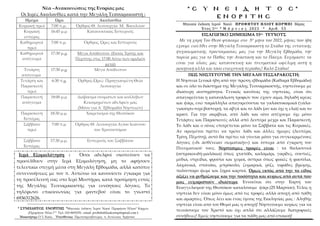Understanding The Dangers Of High Winds In Fast-Moving Storms

Table of Contents
The Sheer Force of High Winds
The destructive power of high winds in fast-moving storms is undeniable. Wind speed directly correlates with the level of damage inflicted. Understanding this relationship is key to assessing the potential threat and taking appropriate safety precautions.
Wind Speeds and Their Impact
The Saffir-Simpson Hurricane Wind Scale, used for hurricanes, categorizes storms based on sustained wind speed. However, even storms not reaching hurricane strength can generate dangerously high winds. Consider these examples:
- 70-80 mph (110-130 km/h) winds: Can cause significant damage to trees, power lines, and even sturdy buildings. Roofs can be peeled back, and windows can shatter.
- Over 100 mph (160 km/h) winds: These extreme wind speeds can cause catastrophic damage, leading to complete roof failures, structural collapse, and widespread destruction. Mobile homes are particularly vulnerable at these speeds.
Real-world incidents consistently demonstrate the devastating impact of such high winds. The damage caused by tornadoes and severe thunderstorms underscores the need for awareness and preparation.
Flying Debris: A Silent Killer in High Winds
High winds in fast-moving storms transform everyday objects into deadly projectiles. This flying debris presents a significant threat to life and property.
The Threat of Airborne Objects
Anything unsecured can become a dangerous missile during a high-wind event.
- Tree branches: Large branches can snap off and cause serious injuries or damage to buildings.
- Building materials: Loose roofing tiles, siding, and even entire sections of walls can be ripped away and become airborne hazards.
- Signs and billboards: These large, heavy objects can be torn from their moorings and cause considerable damage.
Before a storm, secure all loose items around your home. Bring patio furniture inside, secure garbage cans, and trim any overhanging branches. Creating a safe room or shelter in your home, away from windows and exterior walls, is also crucial.
Downed Power Lines and Electrical Hazards
Downed power lines represent an extremely serious danger during high winds in fast-moving storms. Contact with a downed power line can result in severe injury or death.
The Dangers of Contact
- Electrocution: The electric current running through downed power lines is lethal. Never approach or touch a downed power line.
- Flooded areas: Downed power lines pose an even greater risk in flooded areas, as water can conduct electricity, expanding the danger zone.
Always maintain a safe distance from downed power lines and immediately report them to the relevant authorities. Never attempt to move or touch them yourself.
Structural Damage from High Winds
Fast-moving storms, with their intense high winds, can inflict significant structural damage to buildings and infrastructure.
Assessing and Mitigating Risk
- Building codes: Adhering to strict building codes is essential for creating storm-resistant structures that can better withstand high winds.
- Property inspection: Before a storm, inspect your property for potential vulnerabilities, such as loose roofing, damaged windows, or weak structural elements.
- Securing windows and doors: Reinforce windows and doors using storm shutters or plywood to prevent them from shattering or being blown in.
Flash Flooding and its Connection to High Winds
High winds can exacerbate the risk of flash flooding by increasing the volume and velocity of rainwater runoff. Always heed flash flood warnings and seek higher ground if flooding is imminent. Avoid driving or walking through floodwaters. Stay informed about severe weather alerts.
Conclusion
High winds in fast-moving storms present a multitude of serious dangers, including the sheer force of the wind, flying debris, downed power lines, structural damage, and increased flash flooding risks. These extreme weather events can lead to widespread destruction and loss of life. To mitigate the dangers of fast-moving storms, prepare for high winds by researching local weather forecasts, securing your property, and developing a comprehensive emergency plan. Understanding the risks of high winds and taking proactive steps is crucial for your safety and the safety of your loved ones. Remember, preparedness is your best defense against the destructive power of high winds in fast-moving storms.

Featured Posts
-
 Sejarah Kesuksesan Liverpool Manajer Manajer Yang Mengantarkan The Reds Juara Liga Inggris
May 21, 2025
Sejarah Kesuksesan Liverpool Manajer Manajer Yang Mengantarkan The Reds Juara Liga Inggris
May 21, 2025 -
 I Simasia Tis Megalis Tessarakostis Esperida Stin Patriarxiki Akadimia
May 21, 2025
I Simasia Tis Megalis Tessarakostis Esperida Stin Patriarxiki Akadimia
May 21, 2025 -
 Top 5 Finansovikh Kompaniy Ukrayini Za Dokhodami Vid Finansovikh Poslug U 2024 Rotsi
May 21, 2025
Top 5 Finansovikh Kompaniy Ukrayini Za Dokhodami Vid Finansovikh Poslug U 2024 Rotsi
May 21, 2025 -
 The Goldbergs Behind The Scenes Of A Beloved Family Sitcom
May 21, 2025
The Goldbergs Behind The Scenes Of A Beloved Family Sitcom
May 21, 2025 -
 Mass Layoffs At Abc News Whats Next For Popular Show
May 21, 2025
Mass Layoffs At Abc News Whats Next For Popular Show
May 21, 2025
